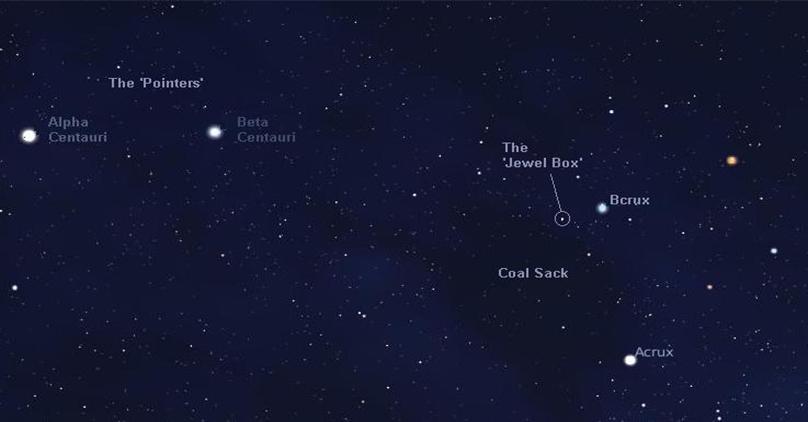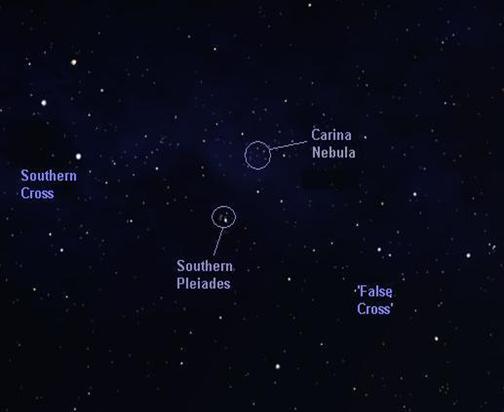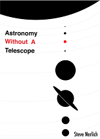Southern Cross
In the neighbourhood
South of the equator, the Southern Cross (or Crux) never sets and it lies on the Milky Way—all of which makes it easy to find. It’s helpful to think of the Southern Cross and the Pointers as a package, since they can be used together to find the Southern Celestial Pole. Stars which are part of a constellation are named with the ancient Greek alphabet, starting with the brightest star which becomes Alpha. Hence,Alpha Centauri is the brightest star in the Centauri constellation. For the Southern Cross, the brightest star Alpha Crux is commonly referred to as ‘Acrux’. The other 5 stars are named in a clockwise direction: Alpha, Beta, Gamma, Delta, Epsilon—Crux.
Bcrux (across from Beta Centauri) is a useful signpost to find the Coal Sack—a dark, light-obscuring dust cloud and the Jewel Box—an open cluster of different coloured stars (though you’ll need good dark adapted eyes to really notice).


On the other side of Crux, you might be confused by the ‘False Cross’, particularly in the early evening before it’s obscured by other stars brightening about it. This is another reason to remember the proximity of Crux and the Pointers.
Anyway, about half way between the two crosses are some objects just right for viewing through a cheap telescope or binoculars.
The Southern Pleiades, like the real Pleiades, are an open cluster of stars that are nicely framed in your field of view at low magnifications. They are about 480 light years away.
For cheap telescope viewing, the Carinae Nebulais generally argued as being ‘bigger, brighter and hotter’, than the better known Orion Nebula. Also arguably, it is less visually dramatic due to the general nebulosity of the Milky Way behind it.
Nonetheless, it’s worth a look and even a cheap telescope will allow you to identify Eta Carinae—a hot favourite for star most likely to go supernova. If that happens, it will be naked-eye visible and an awe-inspiring spectacle through the cheapest of telescopes. It gave a noticeable flash in 1843, doing what the boffins now call a ‘supernova imposter event’.




